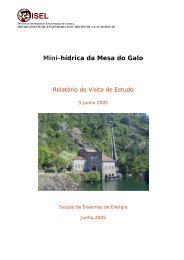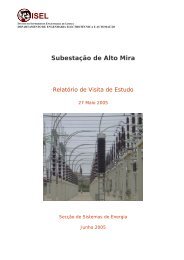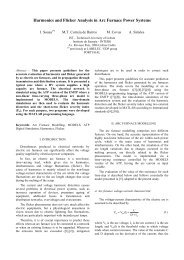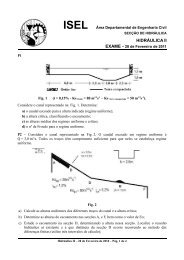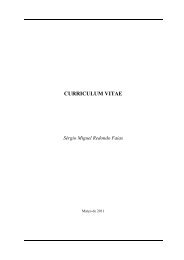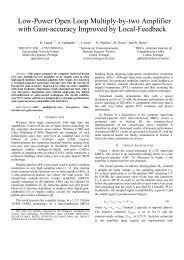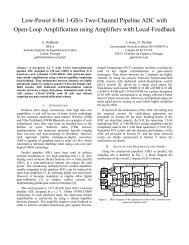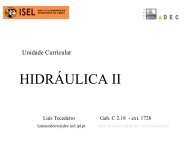Formal Verification of Workflow Patterns with SPIN
Formal Verification of Workflow Patterns with SPIN
Formal Verification of Workflow Patterns with SPIN
You also want an ePaper? Increase the reach of your titles
YUMPU automatically turns print PDFs into web optimized ePapers that Google loves.
5 RELATED WORK 21Properties VericationIt is possible to check if the Travel Agency business process model satisescertain properties using the <strong>SPIN</strong> model checker. It will be checked one propertythat this model should verify. We will express it <strong>with</strong> the help <strong>of</strong> one globalint variable s, which has the value 0 when the process begins, the value 1before process ChargeBuyer nishes and the value 2 before process SendFailurenishes.The property is that whenever we invocate this business process, the processeither charge the buyer or send him a failure notice to tell him that the bookingwas not possible. By making the following denitions #define p (s==0),#define q (s==1) and #define r (s==2), it is possible to formally expressthis property in LTL as [] (p -> (q || r)). This property was automaticallyveried <strong>with</strong> the <strong>SPIN</strong> model checker.5 Related WorkCurrently research has been done into the application <strong>of</strong> <strong>SPIN</strong> to workowspecication and verication. In [6] is proposed a method to check correctnessproperties <strong>of</strong> workows implemented in BPEL. Dataow networks are used todene the formal semantics <strong>of</strong> the workow. The BPEL model is mapped intodataow network and the dataow network is mapped into a Promela model.A method <strong>of</strong> verifying Web Services Flow Language (WSFL) [7] description byusing <strong>SPIN</strong> is introduced in [8]. In particular, it presents an encoding methodthat translates WSFL primitives to Promela. These approaches are both focusedon the translation <strong>of</strong> a workow language to Promela, while this work isfocused on the translation <strong>of</strong> workow patterns to Promela, which are languageand technology independent, in order to formally verify workow systems.An approach <strong>of</strong> giving a representation <strong>of</strong> the workow patterns has beendeveloped <strong>with</strong> π-calculus [9], although it is not oriented towards automatedverication. A benet <strong>of</strong> using <strong>SPIN</strong> is in terms <strong>of</strong> visualizing counterexamplesfor negative results. Also, as the verication in π-calculus is done by checkingbisimulation equivalence, some times results are not obtained in reasonableamount <strong>of</strong> time, even for the pro<strong>of</strong>s <strong>of</strong> very simple correctness requirements [10].There is also being used a subset <strong>of</strong> π-calculus to model workow patterns, Calculus<strong>of</strong> Communicating Systems (CCS) [11], but does not conform to standardCCS, and does not have a verication tool. [12].In [13] is given a representation <strong>of</strong> these patterns in Communicating SequentialProcesses (CSP) [14]. Comparing CSP and Promela, Promela is richerand strictly more expressive (e.g. asynchronous communication is supportedand channels are rst class objects in Promela but not in CSP). Furthermore,Promela's C-like syntax makes it more accessible to non-experts [15].Yet Another Workow Language (YAWL) [16] was also used to representworkow patterns. However, we believe that since <strong>SPIN</strong> is a model checker andPromela has a similar syntax to C it has an advantage over YAWL.




